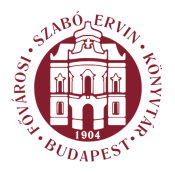Prohászka László: Polish Monuments - Our Budapest (Budapest, 2001)
stood by someone who understands the inscriptions on the pedestal. It was therefore decided that the inscriptions should at least partly be translated into Polish. Thus on 22 March 1989 a memorial stone with the most important biographical details of the Polish general and the Polish equivalent of the quotation on the front of the pedestal was placed near the statue in the presence of the Polish ambassador. The Hungarian National Museum is one of the symbols of the 1848 revolution which took place in Pest. Sándor Petőfi’s enthusiastically nationalist National Song was read out from the steps leading up to the museum entrance. This was the place from which the revolutionary crowd set out toward the City Hall and then on to Buda Castle, to free political prisoner Mihály Táncsics. Many of the statues in the museum garden preserve the memory of the protagonists of the 1848-49 War of Independence, including a bust of Józef Wysocki (1809-74) crafted by Hanna Danilewicz. Eschewing conservative clichés, the sculpture, which portrays Wysocki in a general’s uniform, expresses human purity and braveness. It was brought to Budapest in 1976 as a present from the city of Warsaw. Wysocki was one of the first foreigners to offer his sword to the Hungarian government, and one of the last to leave the sinking ship of the War of Independence. He rose from first lieutenant to general in half a year and the chief commander of the Polish legion taking part in the Hungarian cause. Fighting between Lugos and Orsova in mid-August 1849, his troops were covering the retreat of those fleeing to Turkey, including Lajos Kossuth, the governor. Carved on the pedestal of the statue in the garden are the following words in Hungarian and Polish: In the memory of JÓZEF WYSOCKI (1809-1874) Polish freedom fighter / general of soldiers defending the homeland / who was commander of the Polish legion / in the fight for independence in 1848-49. The historic places where Wysocki and the Polish legion fought are listed on the back of the two-metre limestone pedestal: Arad /Szolnok /Hatvan /Tápió22
